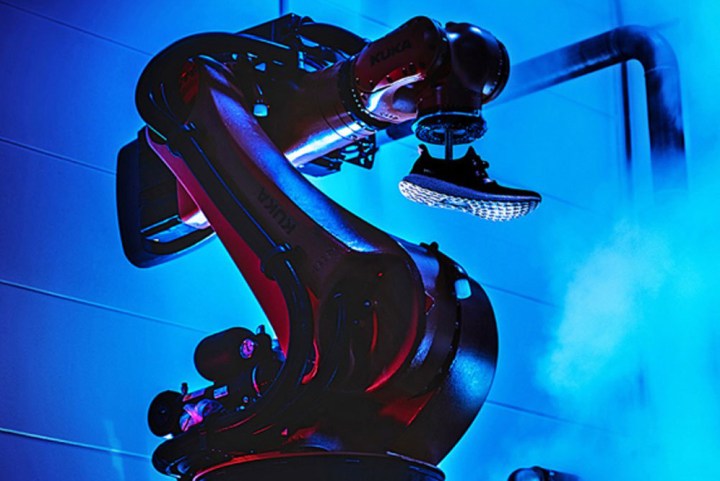
Over two decades ago, Adidas abandoned its German production facilities and outsourced its manufacturing to some one million workers in Asia. Now, the company produces 301 million pairs of shoes each year, with a target of 331 million by 2020. But, as wages in Asia continued to increase, the sportswear and equipment company had to look elsewhere for cheap labor. The answer, it seems, was in machines.
The company’s new Ansbach facility has been named the “Speedfactory” – though a first set of 500 pairs of shoes won’t be available until later this year. Large-scale production is meant to commence in 2017, with a sister “Speed Factory” planned to be built in the United States, according to Adidas Group CEO Herbert Hainer.
The World Economic Forum projected that the Fourth Industrial Revolution will automate 5 million jobs by 2020. But if you fear for your job, Gerd Manz, head of innovation and technology, said “Our goal is not full automatons.” According to Manz, Adidas’s target is to produce 500,000 shoes per year within the next three to five years.
By bringing production back to its major markets, Adidas will save on shipping costs while cutting back on carbon emissions that result from shipping products halfway around the globe.
Adidas isn’t alone in its machine-vision. In 2013, Nike cut ties with 106,000 contract workers and 125 of its most inefficient factories to instead invest in automation. The move may have been unfortunate for low-paid laborers, but helped the company increase it’s profits by 16 percent, according to International Business Times.


